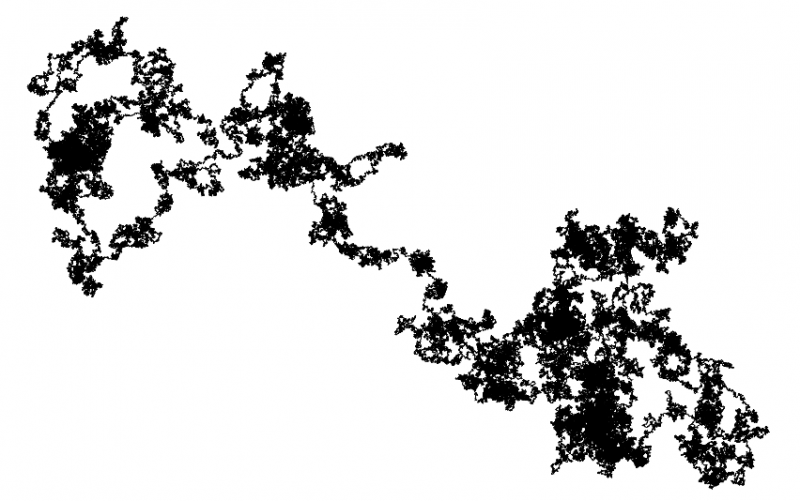
Based on this image created by Matt Henderson, I decided to write something for myself that would explore other possible random walks, although mine are generated in a slightly different way than what Matt did.
Each of these images (which will only appear in Chrome, Safari or Firefox, sorry people still using Internet Explorer) is a visual representation of the first 100, 000 digits of the number where each digit of the number corresponds to a different rotation. They may take a while to calculate, depending on the speed of your computer.
Note that for the last "random walk", I increased the scale significantly over the other random walks so that it made the pattern more obvious.
Anonymous says:
The links for “phi” points to the image for “e”…
September 24, 2013 — 2:34 pm
David Wees says:
Fixed. Thanks!
September 24, 2013 — 4:12 pm
Nathan Clisby says:
Hi David,
Thanks for this!
You might be interested in the work of Fran Aragón Artacho and colleagues in producing walks using digits of pi, e etc., by converting them to base 4 and using the different digits to give the step direction. Apart from being beautiful, it is a powerful technique (I think) for visually identifying randomness in decimal (well, base 4) expansions.
Links:
http://walks.carma.newcastle.edu.au/index.html (main project page)
http://walks.carma.newcastle.edu.au/walks.html (images of walks)
http://walks.carma.newcastle.edu.au/publications.html (link to paper describing the main idea and its applications)
Cheers,
Nathan
September 24, 2013 — 11:57 pm
Carl Oliver says:
The image for 1/7th is surprising! It looks like the spiral pieces that Christopher Danielson makes. Did you try it with any other fractions that have a longer repeating cycle?
March 15, 2017 — 10:53 am
David Wees says:
Hi Carl,
I don’t remember actually. I do remember choosing 1/7 because the cycle was more likely to be visible. It would be interesting to use something like 123456789/9999999999.
Actually, in the long run it would be nice to be able to allow the user to just enter in a number instead of me needing to hard-code in the numbers.
David
March 15, 2017 — 11:17 am